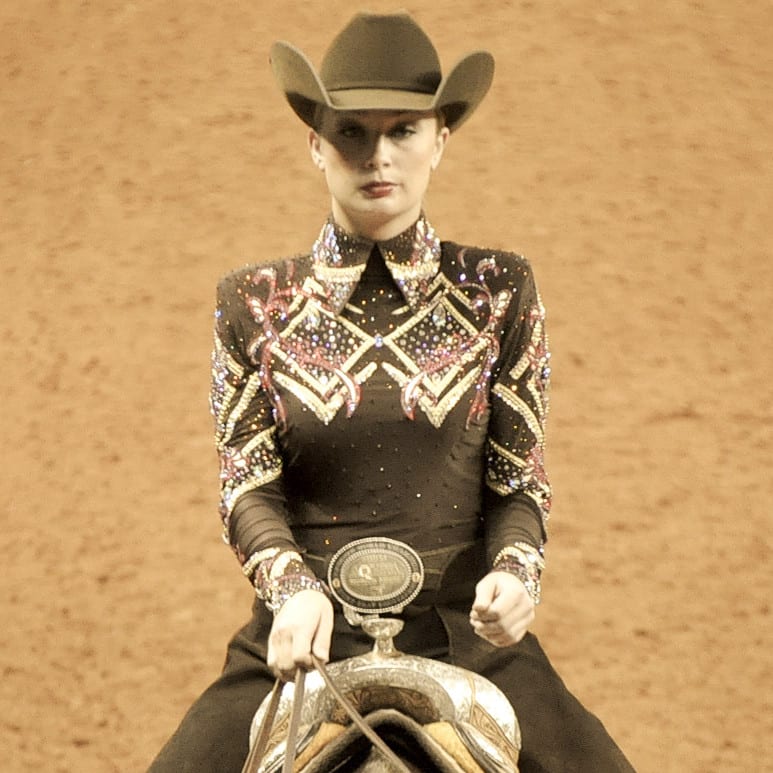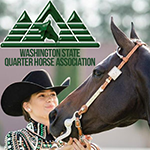Horsemanship is defined as the skill or art of riding a horse – a rather elementary definition considering today’s complicated patterns. Years ago, horse show exhibitors rode only on the rail in horsemanship classes. But as our riders’ skill level has increased, so too has the need to intensify the procedures used to evaluate riders. Yet at the base level, horsemanship really is simply the skill and art of riding a horse.
Today’s classes consist of long, difficult and often complex or tricky maneuvers combined in a pattern designed to test each rider. While the class itself has evolved into a pattern class with a series of intricate maneuvers, judges are still evaluating your ability to ride your horse. The patterns are designed to test this skill: your ability to effectively communicate and connect with your horse.
As such, the judges I spoke with did not come up with quick tips for improving your scores. Instead they go back to the age-old adage – there are no shortcuts to good riding. It takes time in the saddle, sweaty saddle pads and hours of practice. Each had some practical advice for how you can achieve better horsemanship skills. Improving your horsemanship skills is the only way to improve your scores!
Kelly McDowall – Shorten up: Kelly’s suggestion is to shorten your reins. “There should be no drape to your reins in horsemanship. If you have to pick your hand up more than a couple of inches to make contact, you need to shorten your reins,” Kelly stated emphatically. “The basic idea of horsemanship is to communicate with your horse. This is accomplished through the contact or connection with both your hand and your legs. If one of those pieces is missing, then you are riding what I call a loose horse, to me that means you are just herding it around hoping it doesn’t mess up. This means that you are not fully in control or communicating with your horse to the fullest extent, otherwise know as a lack of connection.”
Karen Graham – Get connected: Karen agrees, “It’s all about the connection. I honestly feel if the horse and rider are connected, the smoothness of the pattern will outshine any weaknesses or flaws.” In fact, the best riders, those that are truly connected, anticipate and prevent problems from happening. A strong rider may have an average lead change on a green horse, but a lesser rider would not have the feel to properly set the horse up much less achieve a flying lead change.
Sandy Campbell Jirkovsky – Know your horse: For Sandy, the theme runs parallel, “There are many ideas about improving your pattern scores in horsemanship, but I think the most important way to improve your score is to know your horse and your ability.” It goes back to our definition of horsemanship, “Know where your horse’s strong points are and show that off and stay softer on your weaker points. Know how many strides make a round equal circle at the lope or jog. Know where your transitions are the strongest and focus on your best points. Doing your homework at home will give you the added confidence to go perform a precise pattern in concert with your horse.”
Michael Colvin – Maintain the correct cadence: When judging, Michael says he often sees riders who go “so slow their horses are not holding the correct cadence in their lope.” He thinks that a change in cadence for some could “dramatically change the outcome. Keeping the correct rhythm is not only more pleasing to the eye, it is the only way you can earn credit.” He does not want a rider to sacrifice control – something he appreciates. However, Michael does want riders to understand that achieving the correct cadence is part of the test. If you are looking for something to get the judge sitting up in his chair, establish and maintain proper cadence throughout all your maneuvers. “When the pattern calls for a small slow, it really means a normal, cadenced lope. Many riders ride a large fast in a normal cadenced lope then take the rhythm out of the lope in their small circle exaggerating the slowness. This is simply not correct and it is not attractive to watch.” Keep the rhythm riders!
Mark Sheridan – Ratability: Building on Michael’s point, Mark finds, “When it comes to horsemanship patterns, I usually ask for a large fast circle for the advanced riders. The more advanced age groups, and amateur riders are the classes where I want to see more separation in the riders’ scores. The trend that I see at most of the shows that I judge, is to sit tight in the saddle and fake the gallop. I see many riders lean forward and pump their hands like they are riding a reiner, but are not going any faster than a slow lope.” Mark feels that horsemanship is a stepping stone for a the reining and “having a rider/horse combination that has a throttle to speed up and slow down with control is very important. I also feel as a trainer, that lead changes are also an important part of any pattern. With the level of competition today, one must be able to change leads efficiently, and have control to speed up and slow down when necessary.” More from Mark is available at marksheridanqh.com.
Good luck and have fun while working on these tips from the trainers. The advice they give is based not only on their experience as a trainer, but also as they sit in the judge’s chair and evaluate your ride. Get connected and keep the rhythm!








